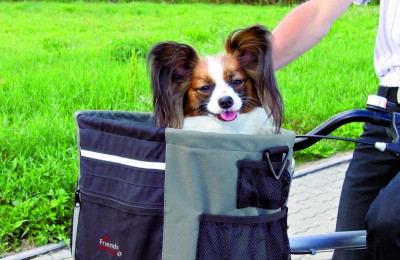Experience has taught me one golden rule when travelling abroad and returning to the UK with cats, dogs (or indeed ferrets!) – Be Prepared. This means meeting the criteria for PETS – the pet travel scheme. Here are some tips to make travel that bit easier.
Plan Ahead
I start organising my pet’s trip at least seven months before I leave, as pets can’t re-enter the UK within six months of having a blood test, and this has to be done at least a month after the rabies vaccination. You will need to have all of the relevant documentation with you when you travel and you will need to check that your pet insurance covers overseas.
The cost of getting all of this done is at least £200 but be prepared for extra costs and fees. Some airlines allow pets to travel as hand luggage (you’ll need to check) but particularly with transatlantic flights they will normally be carried in the hold, which is kept warm and oxygenated.
- Make sure you have documentation well in advance from your vet.
- Check your pet is up to date with all vaccinations.
- Make sure your insurance covers overseas travel for your destination.
How to qualify for PETS
Your pet must be fitted with a microchip (a legal requirement in the U.K.), they must have a pet passport or third country official veterinary certificate, and they must be vaccinated against rabies. In the case of dogs they will probably have had treatment for tapeworm and ticks.
Minimise Stress
I have seen veterinary officials at airports refuse to carry animals if they deem the container too small. Ensure that the container is big enough for them, they must be able to turn around and lie down without discomfort. You can put their blanket or item that they are used to in the container to provide some familiarity. Make sure that they have adequate food and water (normally provided by a drip-bottle attached to the side of the cage). They will also need a litter tray and this needs to be as far away from the feeding area as possible and firmly attached to the floor. Remember to keep the cage upright at all times otherwise you will have an unpleasant cleaning task on your hands as well as a very irritated pet!
If you are driving, take regular breaks for some exercise and for your pet to be fed and drink water, remember to take your pet’s favourite food with you so that they have a sense of familiarity. Dogs can travel in the vehicle with you but cats should still travel in a cage.
- Make sure the container is easily large enough for your pet!
- Make sure they have food and water for the entire journey.
- Have a toy or blanket they like in their carrier to make them feel more at home.
Before You Leave...
Before leaving, make sure your pet has gone to the toilet and isn’t hungry. It is also worth taking several old towels, kitchen paper and plastic bags (e.g. nappy bags) in case of accidents.
You may want to talk to your vet if you know that your pet fears travelling. They will be able to offer advice and in some cases prescribe tranquillisers.
When you arrive at your destination keep the pets indoors until they have acclimatised to their new surroundings. Dogs should be kept on a lead and cats should not be allowed out too soon especially in busy neighbourhoods. Give them time to adjust to their new surroundings, so let them have a good walk and look around and, crucially, find their own space where they can make a nest.
- Let your pet get used to their new surroundings.
- Keep a close eye on on them so they don’t run off and let them find their own place to make their nest.
Getting Back Home
Do remember though that all rabies-susceptible animals entering the UK not covered by the PETS scheme are normally required to spend four months in quarantine. That includes animals like rabbits and monkeys – should you happen to be travelling as part of a circus.
All pet dogs, cats and ferrets (including assistance dogs) can enter or re-enter the UK without quarantine under PETS provided they meet the rules of the scheme, which differ depending on the country the pet is travelling from. You will need to check.
- Make sure you’re entering through a legal port.
- Have documentation showing your pet is free from tapeworm.
Not Just Holidays
All of this sounds formal and inflexible and it is so for good reasons. But what happens if you have to re-home an animal because of, for example, a death in the family? This happened to me in 2011 and I was terrified that Errol, my brother-in-law’s beloved elderly Birman would have to spend four months in quarantine. In fact, he did not have to because he had been kept up to date with his rabies shots and he had been microchipped and had an American pet passport. Andy was always meticulous about such things and in the tragedy of his passing it meant that we were able to give Errol a good home. Once again, the message is: Be Prepared.
Have you recently travelled with pets? Let us know your experience in the comments box below.








